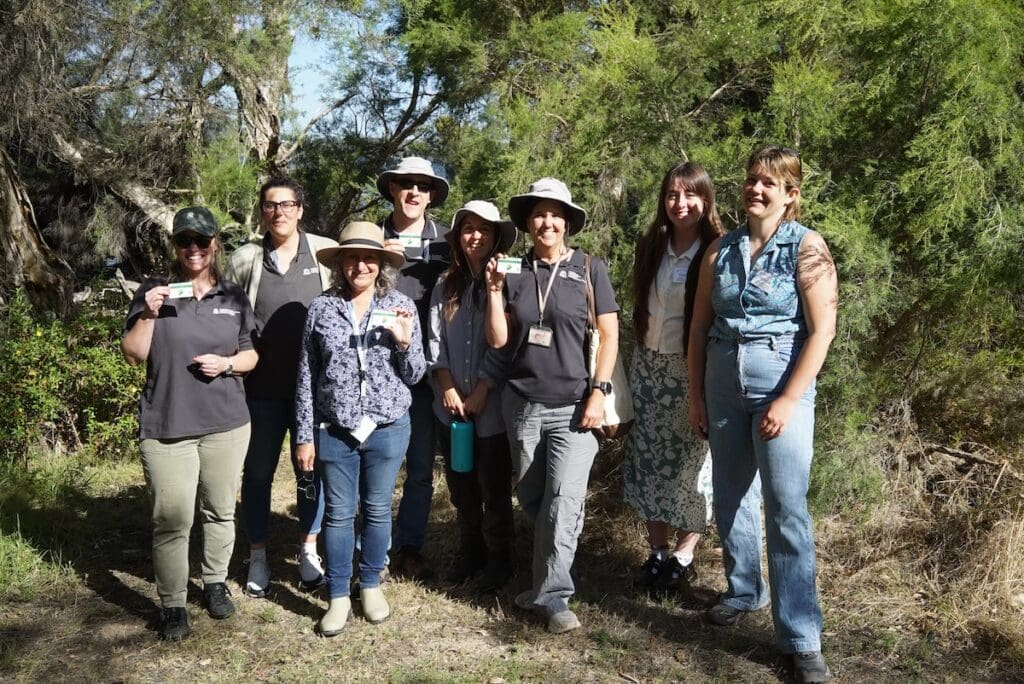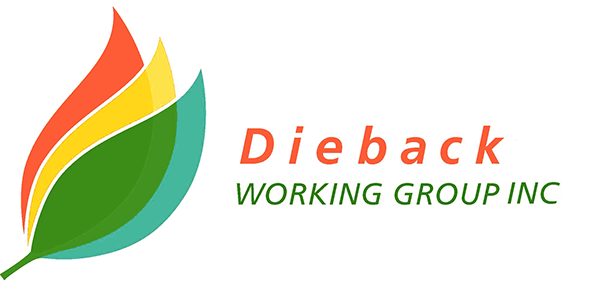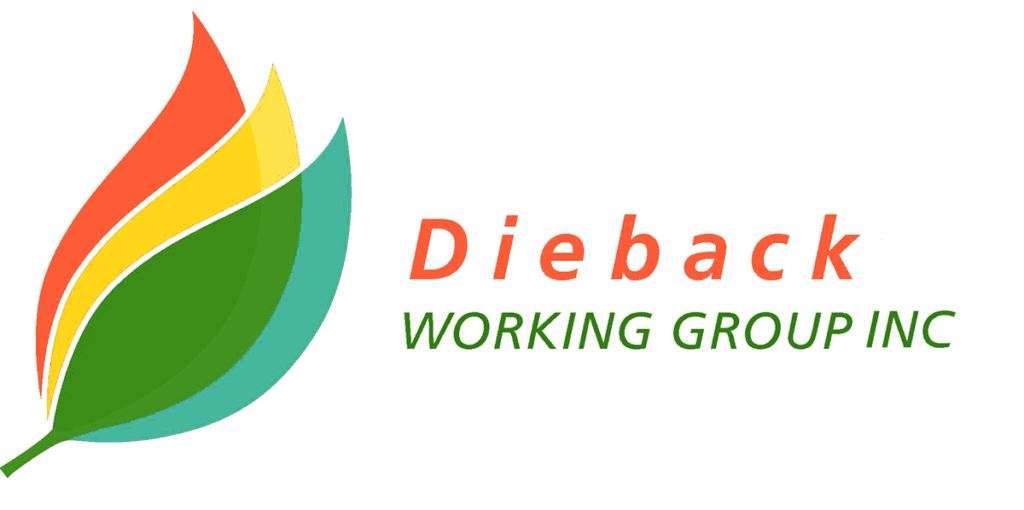About Phytophthora Dieback
The presence of Phytophthora Dieback is determined by observing deaths in plants that are considered susceptible to the disease. Common susceptible plants include Jarrah, banksia, grass-trees, zamia palms, dryandra and hakea species. Arguably the best indicator species for Phytophthora Dieback in WA are the Banksia species.
The following vegetation features can also be used to indicate the presence of Phytophthora Dieback.
- Plant deaths localised within a distinct location of the property, usually a low lying, water accumulating area. Lines, groups or localised areas of plant deaths are more likely to be caused by Phytophthora Dieback than odd scattered individual plant deaths in otherwise healthy vegetation.
- Look for an edge effect. Edge effects are most obvious when there is a clear distinction between healthy and diseased vegetation.
- Look for old deaths and recently killed plants, that is, an ‘age range’ in the deaths. This is because Phytophthora Dieback moves from plant to plant over time, killing each plant as it goes.
- Look for signs of the disease in a range of different susceptible plant species.
- Look for something that could have introduced the disease, for example, a track, road or vehicle activity.
You must be careful to discount other factors that could have caused plant deaths, such as fire, insects, flood, drought, nutrient deficiencies or toxicities, herbicide damage; and other plant diseases. If non-susceptible trees, for example, red gums, tuarts, flooded gums or wandoo are dying then it is likely that the cause of poor plant health is not Phytophthora Dieback.
To manage Phytophthora Dieback in bushland on your property you need to avoid its introduction, minimise its spread over your property if present and treat infested areas with phosphite. For a property with a significant area of bushland, the first step to successfully managing the disease is to know where it is and where it isn’t. Getting good advice at this stage from either a consultant, your local catchment group or your local government authority will not only save you time & money but optimise your success. Landowners in high-risk areas who currently have a disease-free property should take all practical steps to prevent the accidental introduction of the disease. For further information on how to manage the disease within private property and bushland please refer to our Bushland Manual, found in our publications section.
You can receive training to gain a proper understanding of Phytophthora and how to manage it via a GREEN CARD course. These are offered occasionally by DWG and its Registered Trainers listed here on our contacts directory who specialise in Phytophthora Dieback.
In bushland, the most common tree species injected include jarrah, snotty gobbles, banksia species, sheoak and woody pears. Only inject trees with a diameter at chest height of 10-14 cm or greater. To complete the treatment spray small trees and understorey species such as grass trees.
Identify where the Phytophthora Dieback is in the bushland area, apply relevant PPE and ensure you are familiar with the MSDS sheet and accurate mixing proportions of phosphite with either scheme or rain-tank water. As a priority treat the buffer between healthy and diseased vegetation to prevent the movement of the disease into the healthy area. Once complete you can then treat along edges of tracks, paths and within the diseased area. Large-scale treatments are best completed by a commercial operator who is licensed by the State Department of Health or relevant authority.
You will need to repeat phosphite treatment to maintain control of the disease.
It is recommended that injecting needs to be conducted every 3-5 years and spraying every 1-2 years. Maintaining observations of the treated vegetation is important and can guide the need for repeat treatments.
Ensure to wear a sun-hat, long-sleeved shirt, pants, boots, safety glasses, rubber gloves when mixing chemicals and a face mask when applying phosphite. For further information on safety and first aid treatment please consult the material safety data sheet (MSDS) supplied with the chemical. This information is only provided as a general outline and should not be considered as current or absolute. DWG waives all and any consequence resulting from the interpretation of this information.
Phosphite and equipment to apply it can be purchased from most Rural / Agricultural suppliers. Alternatively a number of community groups across the south-west hire out the treatment gear, contact your local Natural Resource Management Office or local government Environmental Officer to check what is available. Contractors may also supply the above.
About dieback-free basic raw material (BRM)
Basic raw materials (BRM) are materials such as gravel, sand, limestone and hard rock that are usually used in their unprocessed state. The use of BRM poses a significant risk of spreading Phytophthora Dieback (dieback) if it comes from an infested pit.
BRM that is not infested with Phytophthora (the plant pathogen that causes dieback).
Dieback-free BRM is a valuable resource with very limited availability. Its most appropriate use is within or adjacent to areas of native vegetation that have high conservation significance, and warrant long-term protection from dieback.
When government agencies refer to dieback-free BRM they are generally referring to the Department of Biodiversity, Conservation and Attractions (DBCA) standard which states that dieback-free BRM has been hygienically extracted from a site that was assessed by a registered Phytophthora Dieback Interpreter as uninfested i.e. dieback-free.
‘Certified’ suggests that there is a system that enforces standards across the extractive industries around exploration, extraction and transport to ensure that BRM is dieback-free. Unfortunately, no such system has ever existed but the term and misconception has persisted for many years.
You may find a supplier who offers ‘certified’ dieback-free BRM or BRM that comes with a dieback-free ‘certificate’. However, as there is no system for certifying BRM, there is no guarantee that the product you purchase will actually be dieback-free. DBCA does not accept ‘certificates’ as proof that BRM is dieback-free.
In most cases assessing the dieback status of an existing quarry is not possible because quarries are generally devoid of vegetation making them uninterpretable. In terms of sampling to determine the status of the status of the resource: Phytophthora is difficult to detect through random sampling and it cannot be concluded that an entire site or an entire BRM stockpile is uninfested from a single or a small number of negative samples.
Firstly, there is no list of suppliers of dieback-free BRM. However, there is high confidence that BRM is dieback-free when:
- It is sourced from a site that was originally assessed as dieback-free by a registered Phytophthora Dieback Interpreter (Interpreter)
- When the site is maintained and monitored with a rigorous dieback management plan
- When the BRM is extracted and transported hygienically to the site of use
Yes, it may still contain a small amount of organic matter where dieback spores persist.


